(We found plenty of beer and chocolate, though!)
After Luxembourg, we headed into Belgium, another country we were visiting for the first time. We stayed three nights in Brussels, and despite the rainy and overcast weather at times, we enjoyed exploring the city.
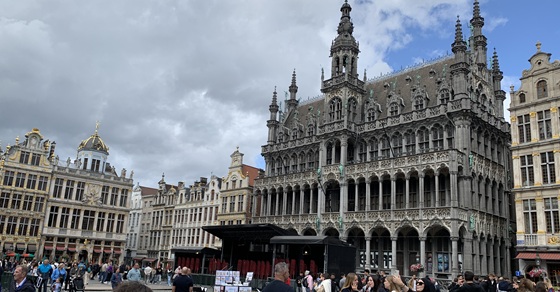
As we’ve discovered, every European city has at least one “fine art” museum. The Royal Museum of Fine Arts certainly held its place among many others, but by this point in our trip we were starting to max out on “fine art.”
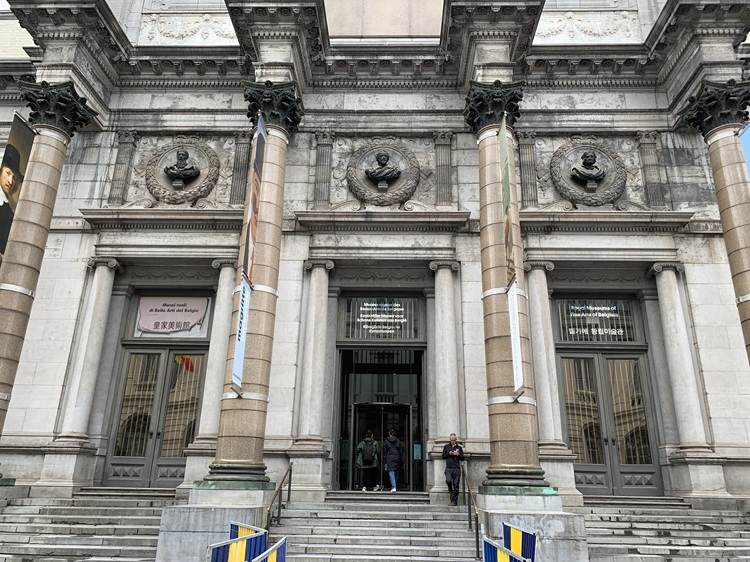
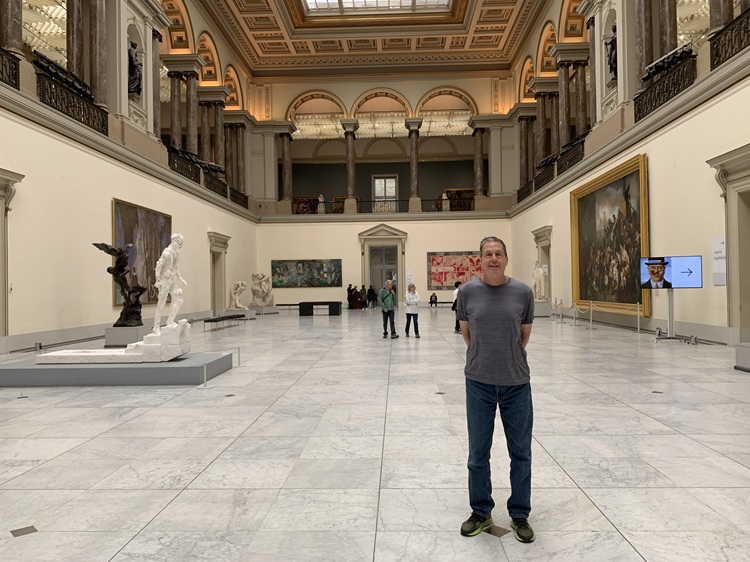
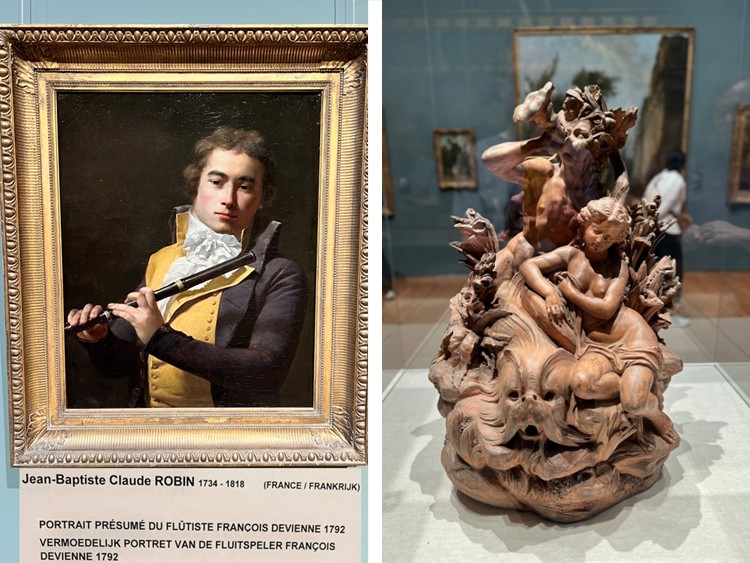
The Magritte Museum was connected to the Royal Museum and exclusively featured the works of Surrealist painter René Magritte. They were indeed surreal, and at least notable for being curious and different.
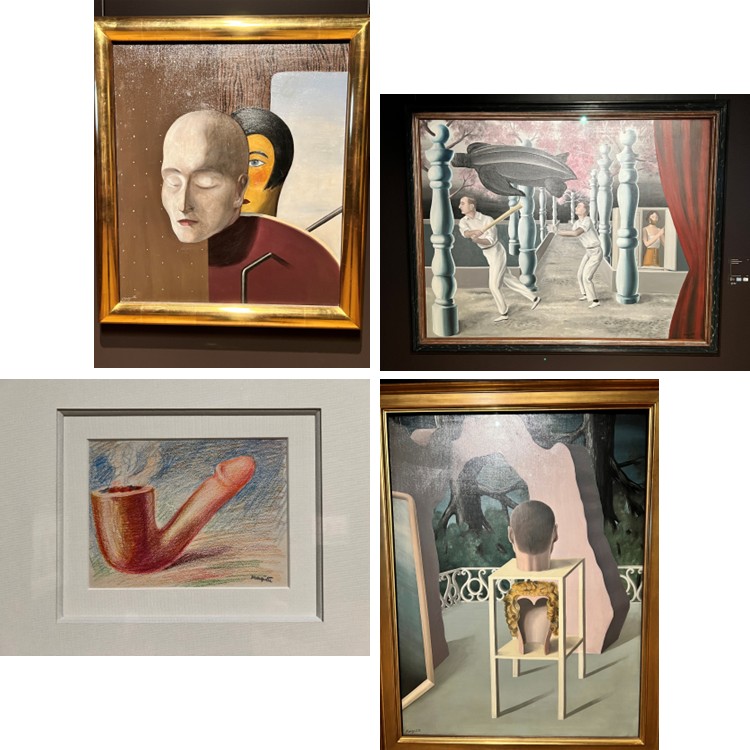
Next, we visited Brussels’ Musical Instrument Museum. While Phoenix’s MIM may now claim to be the world’s largest, Brussels’ four-story museum is impressively large as well, and certainly older.
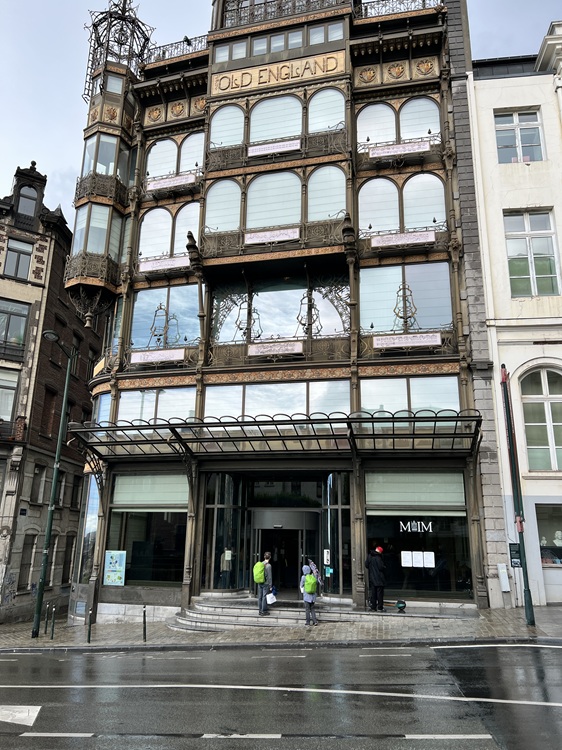
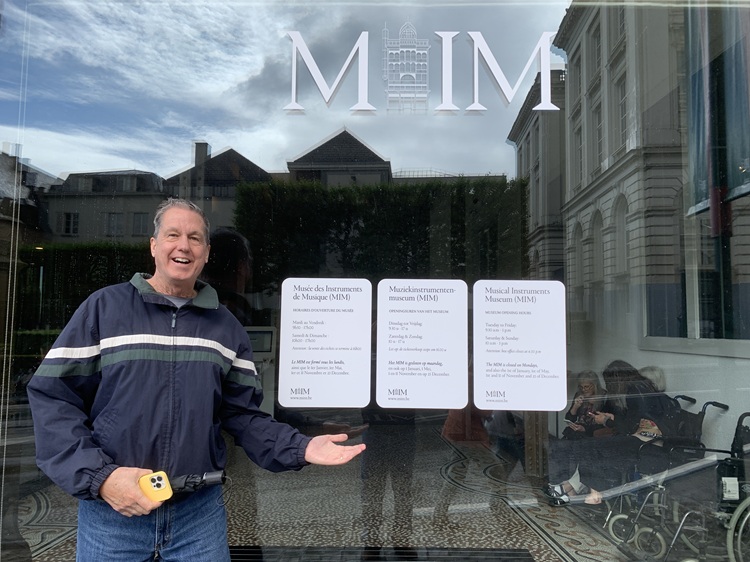
Although they had instruments from all over the world, their focus was on old instruments from Europe. There were a lot of pianos and harpsichords, many of which doubled as art pieces with their painted inner lids. And of course, there were flutes and trombones.
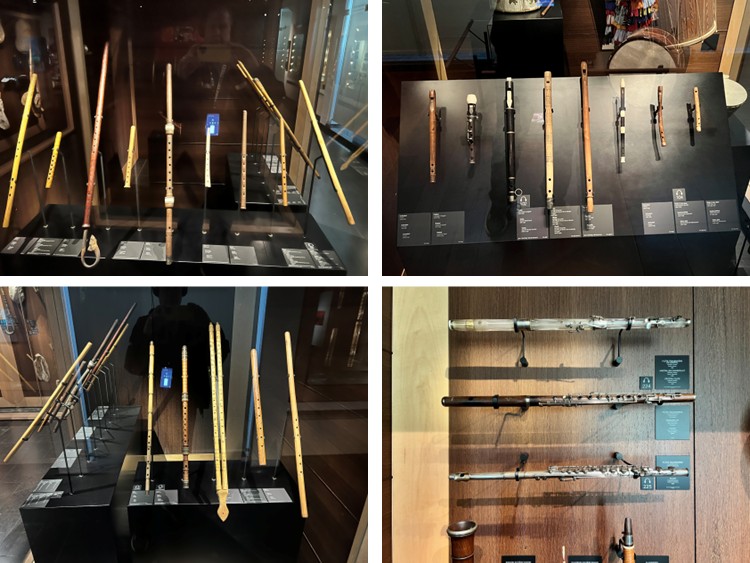
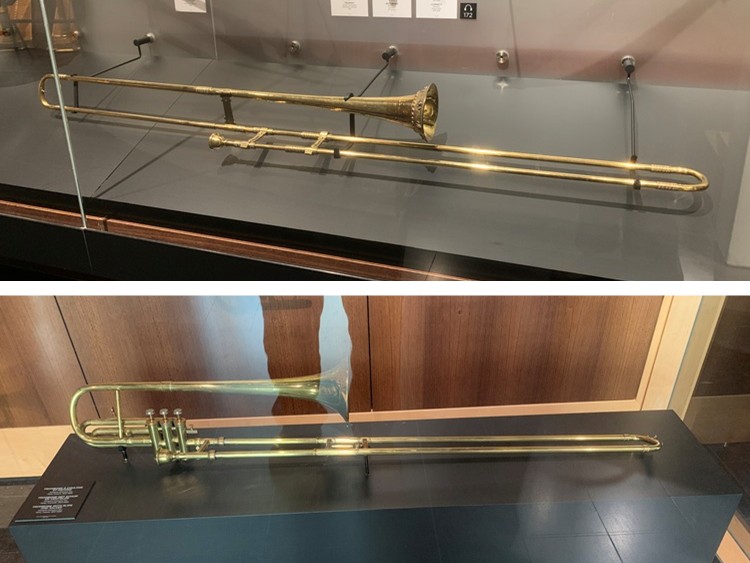
While in recent years Maynard Ferguson designed a combination valve/slide trombone called the “Superbone” and Brazilian trombonist Raul de Souza designed one called the “Souzabone,” apparently someone beat them to it long ago.
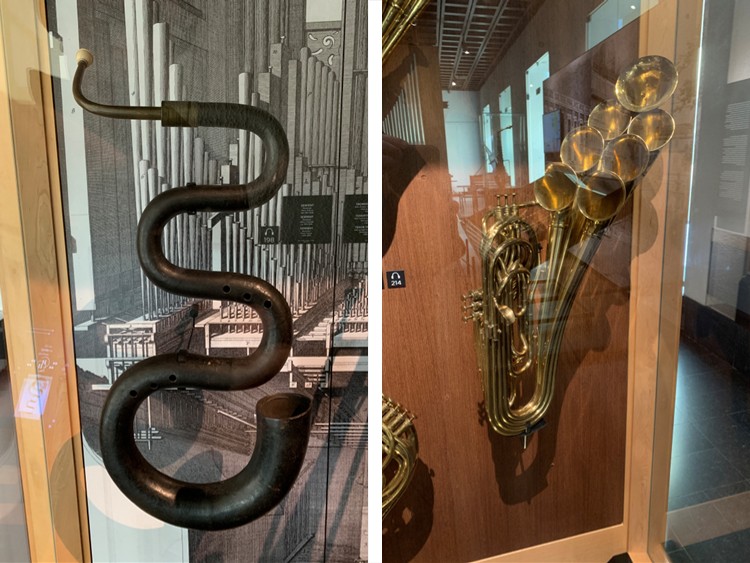
Left: the Serpent. Right: a seven-bell trombone invented by Adolphe Sax. The six valves each direct the airflow into their own bell; pressing no valves sends the air through the largest bell.
Of course, the museum honored Toots Thielemans, Belgium’s native son, who became the world’s best-known jazz harmonica player.
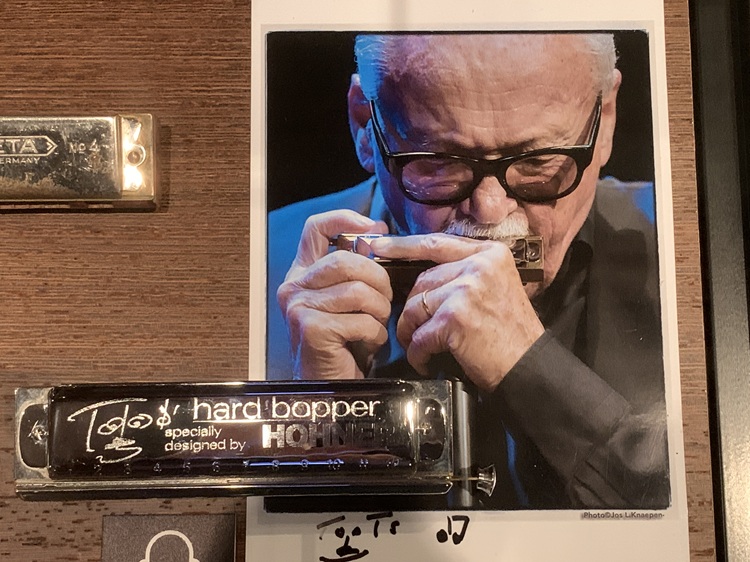
On our second full day, we wasted no time finding the chocolate Belgians are so famous for. We visited Choco-Story, which offered an extensive self-guided tour featuring a play-as-you-go audio guide that provided narration every step of the way.
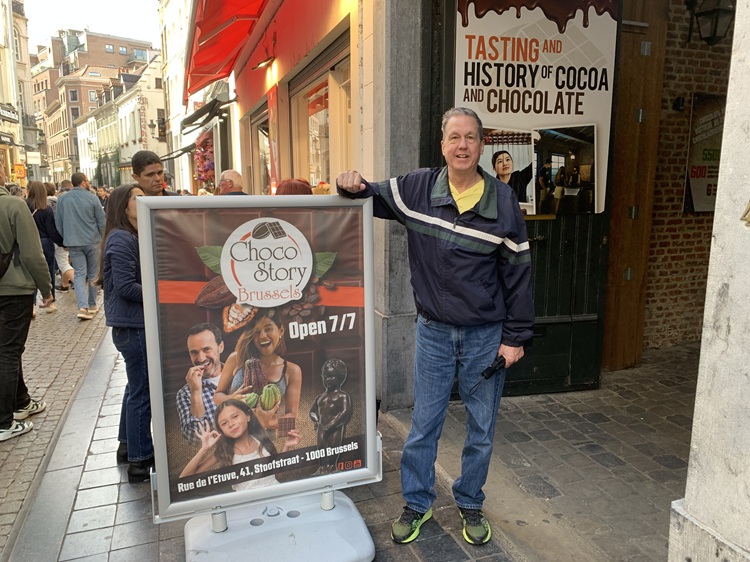
To say it was thorough would be an understatement! Our journey through the two-story museum started with the discovery of cocoa by the Mayans, how the invading European explorers took it back to Europe, how it was originally a delicacy enjoyed only by the wealthy (complete with display cabinets full of the fancy pitchers and cups they drank from), how it’s made, where it’s grown now, and all the different varieties of chocolate. At the end, we tasted five varieties.
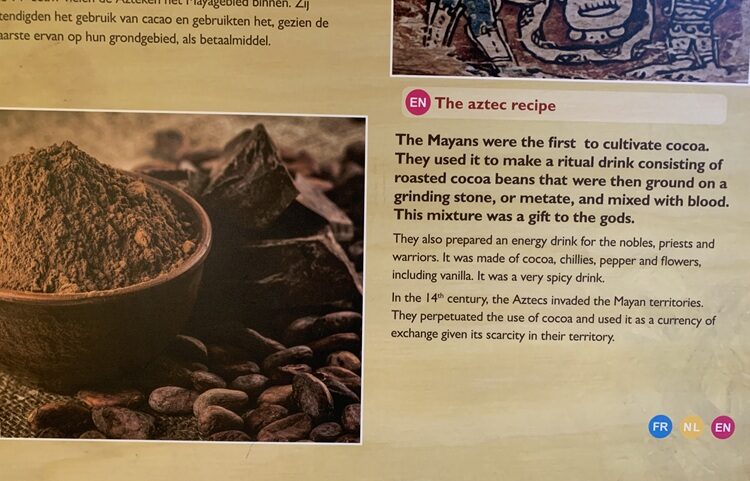
As if Jeff needed any more justification for eating chocolate…
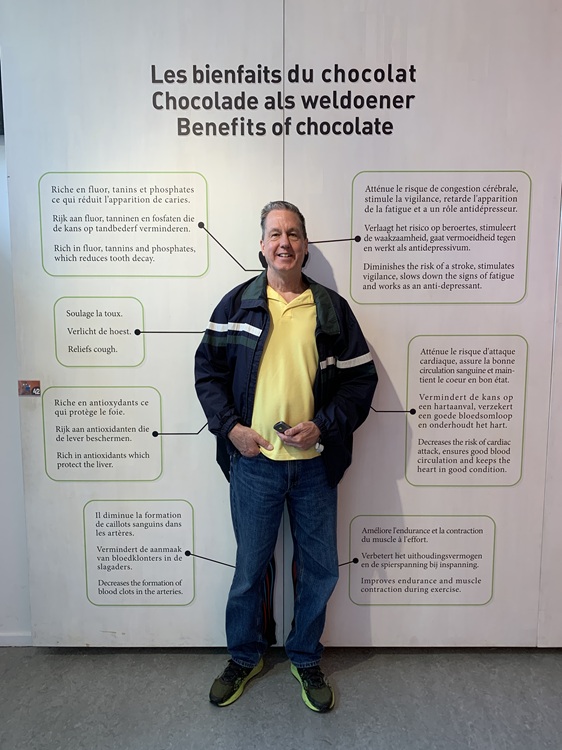
Near the museum, in a heavily trafficked, touristy area, we saw this:
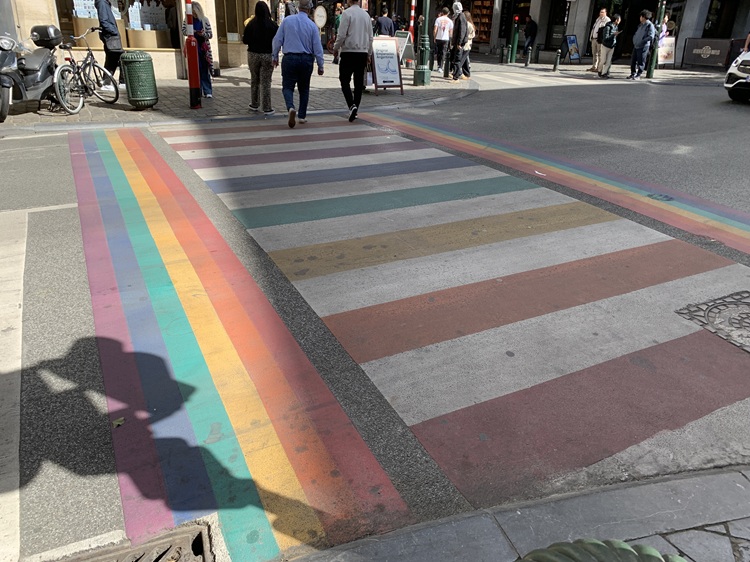
Next, we walked a couple of blocks to Grand-Place, a large, spectacular square lined with majestic buildings.
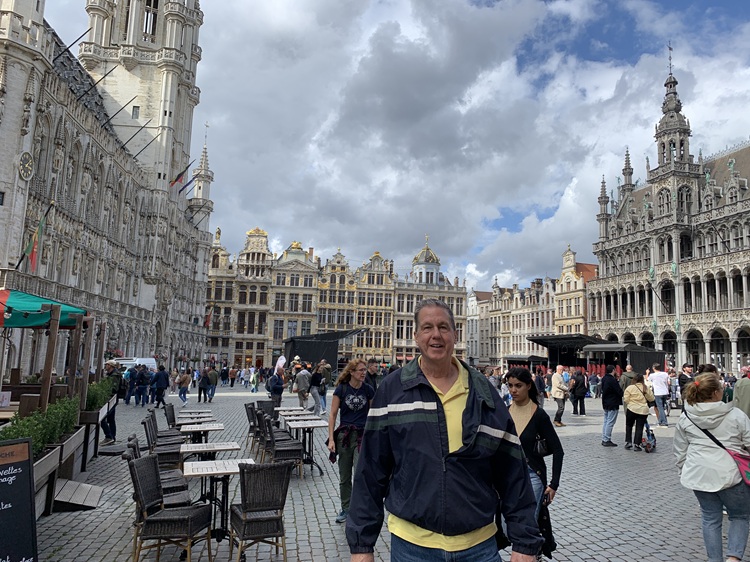
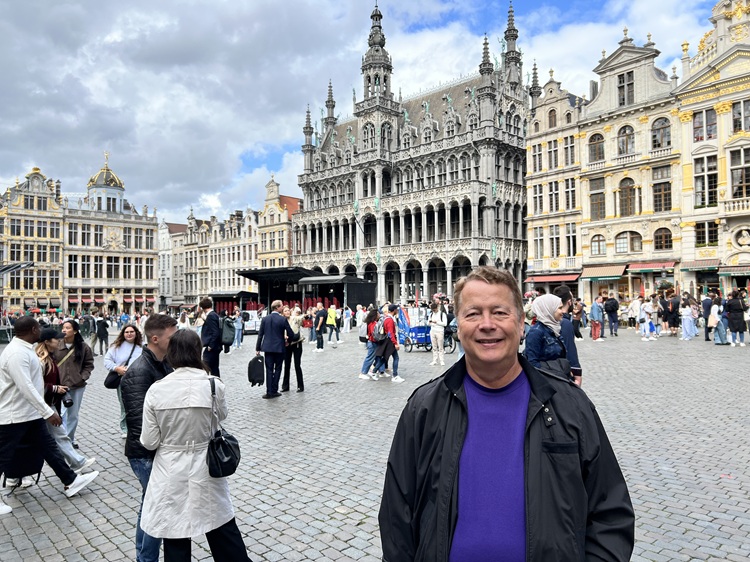
Thanks to Rick Steves’ guidebook, we knew that several well-regarded purveyors of fine chocolate were located on or near this square. Godiva was just off-camera to the right, and Neuhaus, who claims to be the inventor of the Belgian praline, was the store with the green-front awning to the right of Dave’s head.
For the best price/quality value, Rick recommended Leonidas, just half a block off the main square. We made our way there. While it was tempting to buy some of everything, we chose these two assortments.
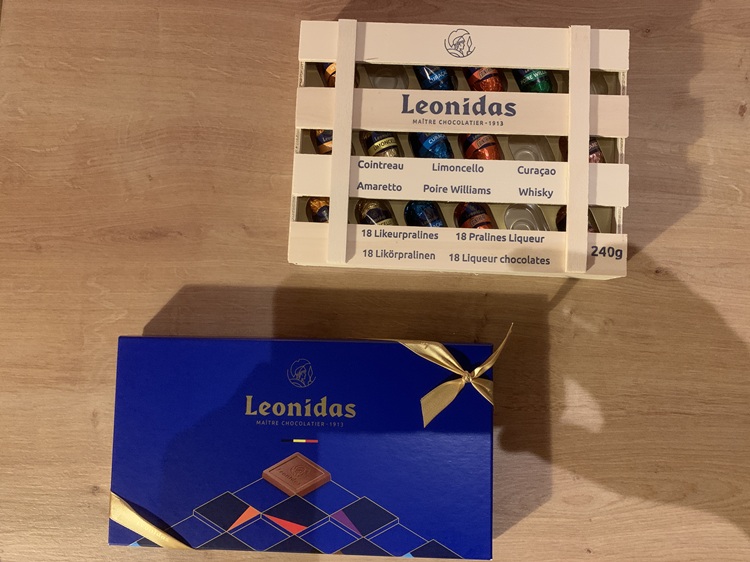
OMG… They were SOOOooo good! The blue box contained seven varieties of white, milk, and dark chocolates, of varying darkness and flavors.
For many years, it’s been our custom to buy a box (or three) of Anthon Berg liquor-filled chocolates (shaped like little liquor bottles) from Costco to enjoy during the Christmas season. They’re from Denmark. They’re delicious, but these were in a league of their own! The outer wall of chocolate was thinner and there was so much more liquid filling!
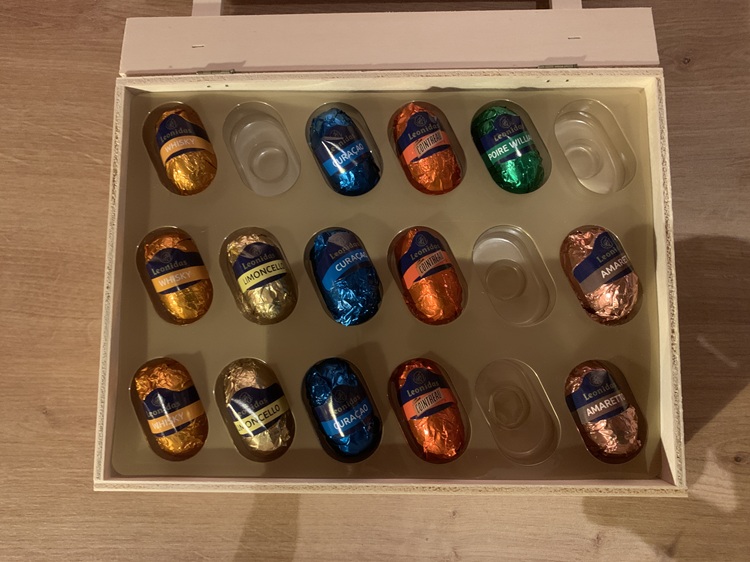
Next, we visited the Comic Art Museum. It showcased the development of the comic art form in Belgium over the last century, with hundreds of representative drawings and background information. It was engaging – and different from many of the other museums we visited on this trip.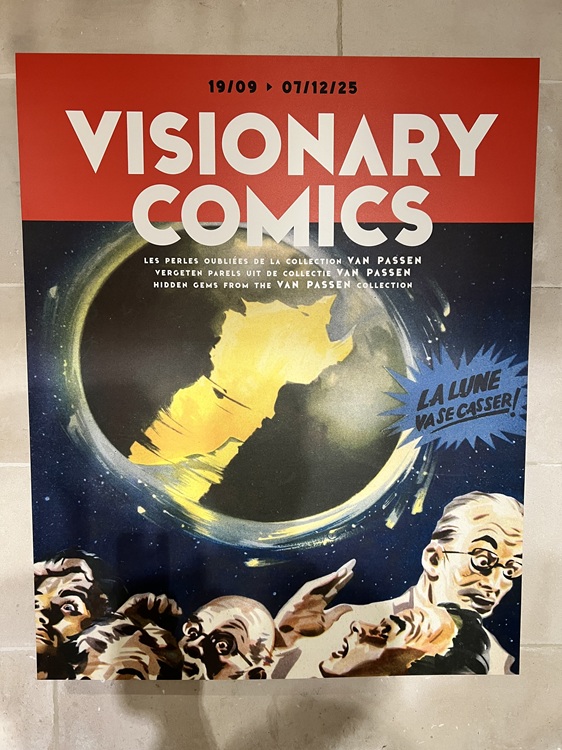
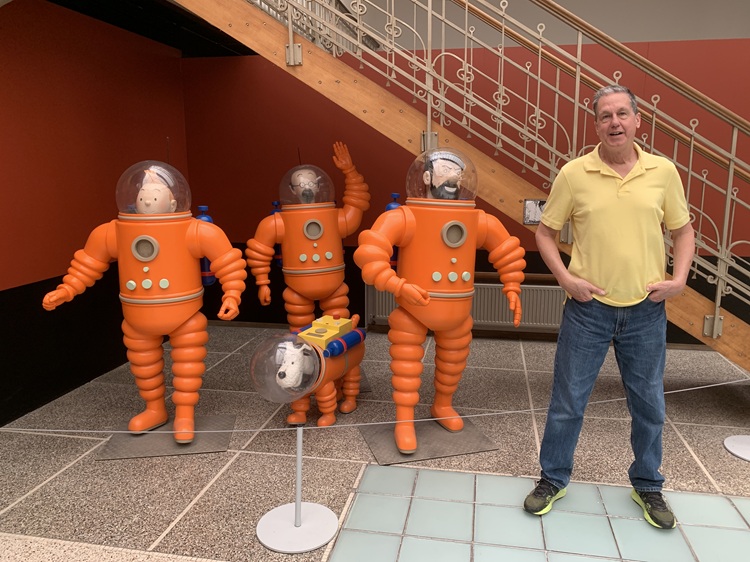
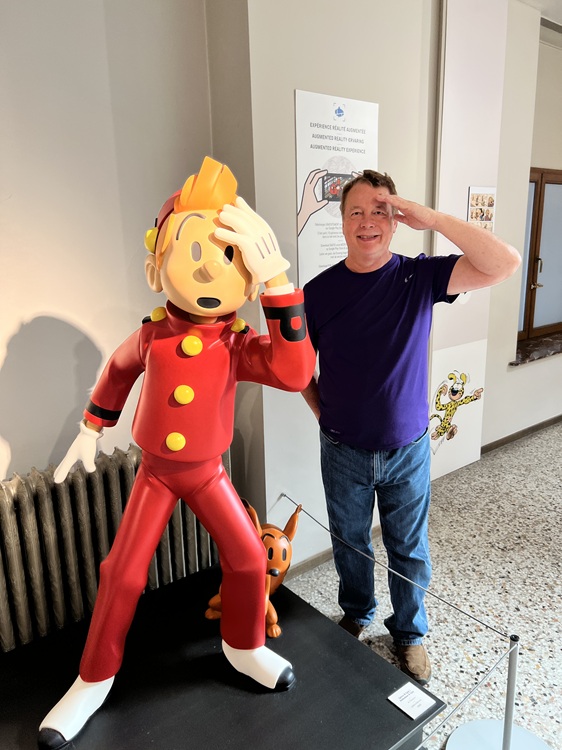
Fun fact: Did you know The Smurfs were created in Belgium in 1958? The Smurfs franchise began as a comic and expanded into advertising, films, TV series, ice capades, video games, theme parks, and toys. The Smurfs were introduced to the US in 1981 as a Saturday morning cartoon. By 2008, the franchise had generated $4 billion in revenue, making The Smurfs one of the highest-grossing media franchises of all time.
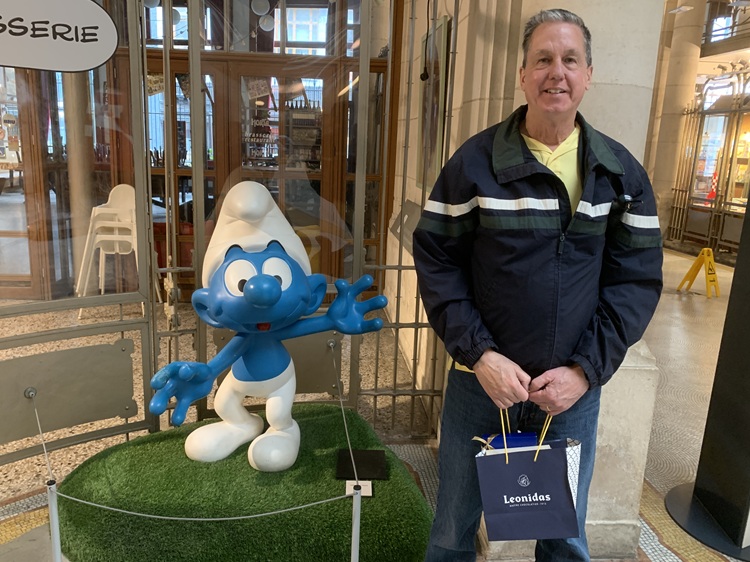
Understandably, Le Trombone Illustre caught Dave’s attention. It was described as “a pirate supplement to Spirou magazine.” It ran for 30 issues between March 17 and October 20, 1977. In it, 53 artists were invited to reinvent the codes of comic art, but it didn’t catch on with readers and was discontinued.
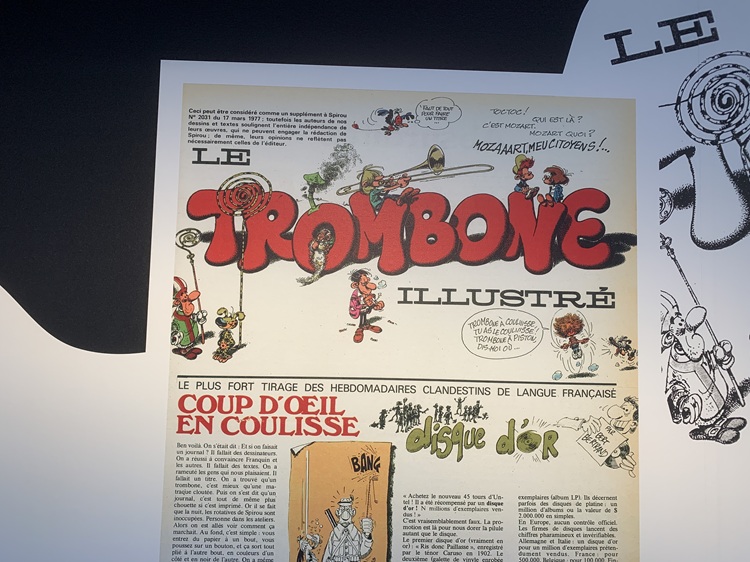
After visiting the Comic Art Museum, we were ready for dinner. During our walk from Grand Place to the museum, we passed a bar/restaurant called A La Mort Subite. (That means “at the sudden death.” Appealing name, right?) But it was recommended by Rick Steves, so we decided to try it.
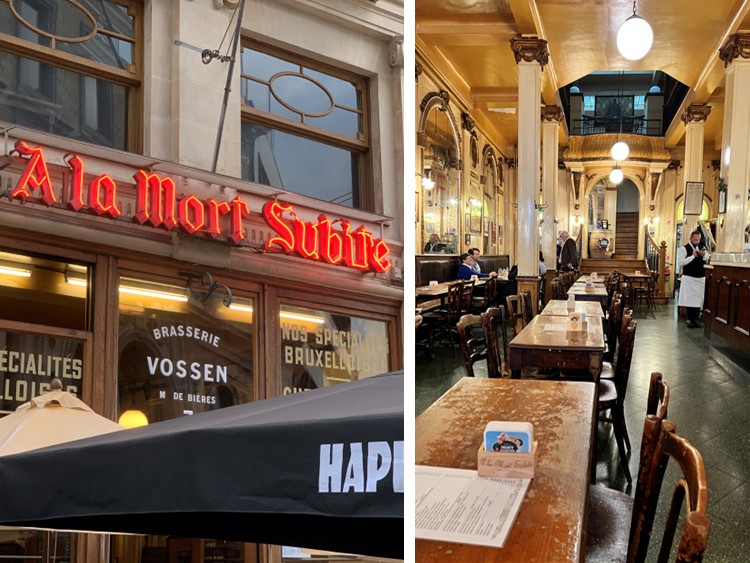
The interior was impressive! The food … not so much. We both ordered Croque Monsieur and were disappointed. Not even melted cheese on top. We decided that perhaps this dish was best left to the French.
Dave rarely drinks beer, but when in Belgium, do as the Belgians do, right? Especially since Belgium is so famous for its beer. Dave ordered one of Mort Subite’s own beers, which was served in a glass with their logo. We discovered that restaurants and breweries having glassware with their logo is common in Belgium. It was pretty good, although Jeff’s raspberry beer was even better.
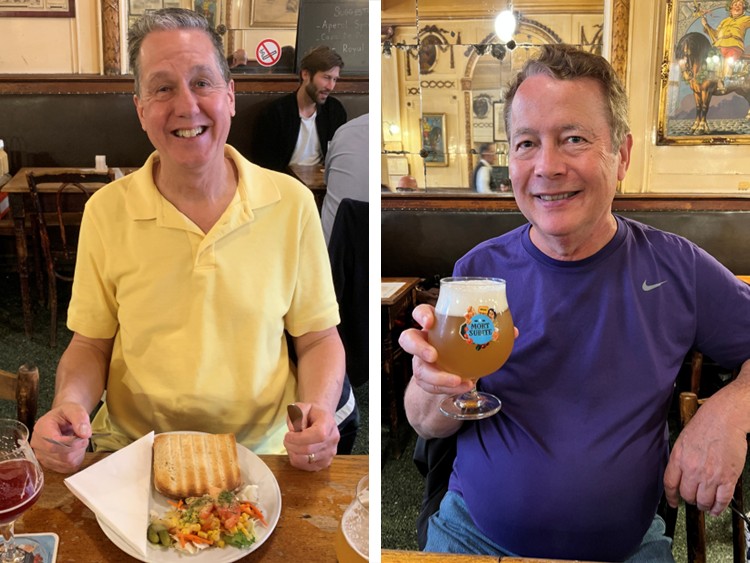
Since we’re on the topic of food…
When we arrived in Brussels, we discovered that our apartment had some notable discrepancies between the photos in the listing and the actual place. It’s a long story we won’t go into here (we covered it in our newsletter), but the short version is, it was unacceptable. Thankfully, we found a room with a kitchenette at a nearby Hilton Garden Inn. After that ordeal, we wanted something close and comforting. We found a little Mexican restaurant a couple of blocks away. We were the only people eating there, which can be a warning sign, but it was good.

On our second night, we chose a nicer place, also near our hotel, called Rendez-Vous des Artistes. The food was delicious, but the service was … let’s say “leisurely,” even by European standards.
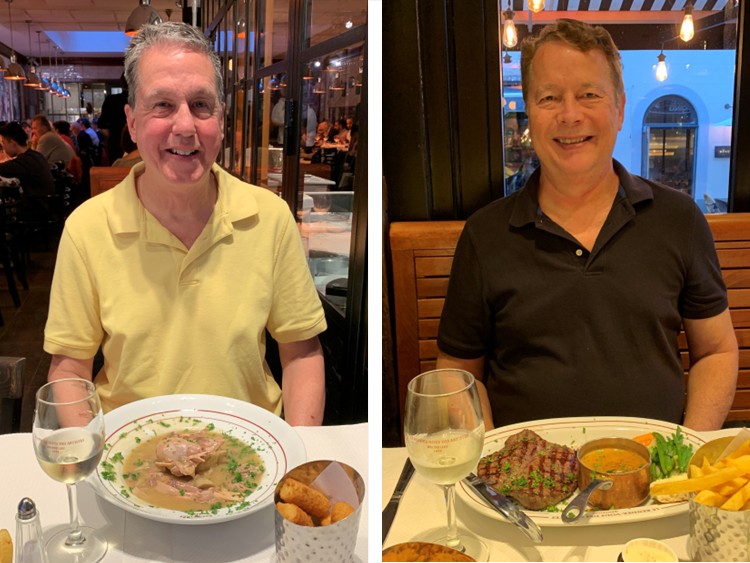
Before we wrap up this already-long post, here are a few humorous and/or curious things we saw around Brussels.
This store is presumably for cosmetics … or is it?
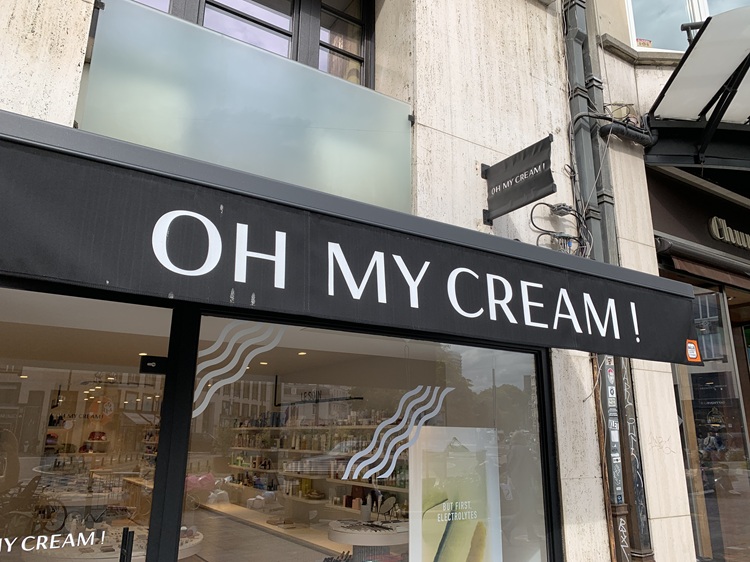
This product was available in A La Mort Subite, mentioned above. Remember, that translates to “sudden death.” They probably had this on hand for Americans who want to put “ketjep” on their fries. We passed.
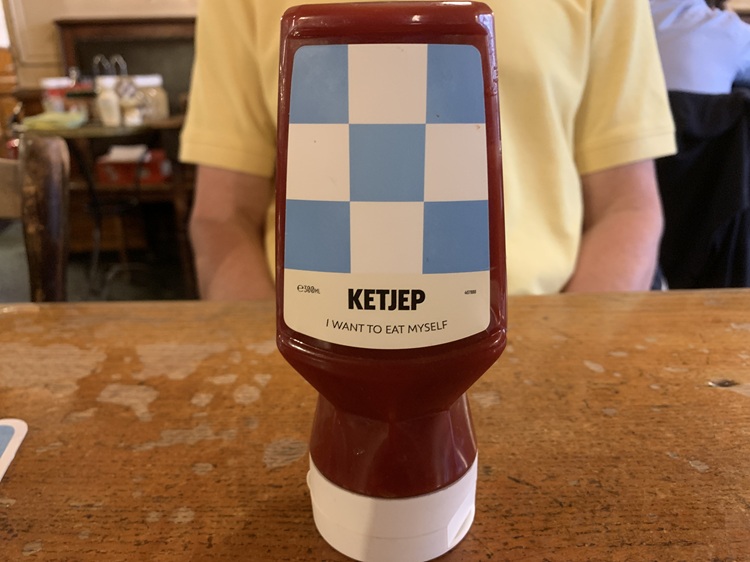
Speaking of food and death, this restaurant was in the Bruxelles-Midi train station, which is huge. It’s not just a train station, it’s a small shopping mall. Perhaps the person who thought up the name didn’t realize how it might be interpreted by English speakers. Or maybe they did.
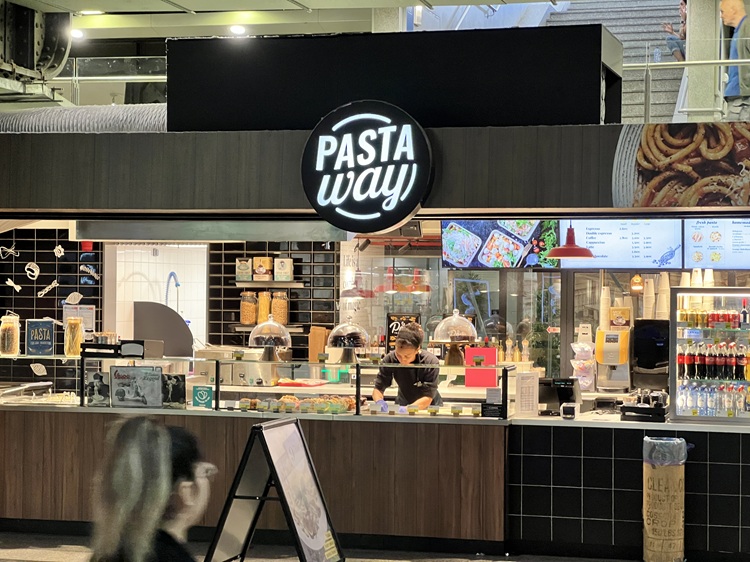
And on that note… We’re on to Bruges!
